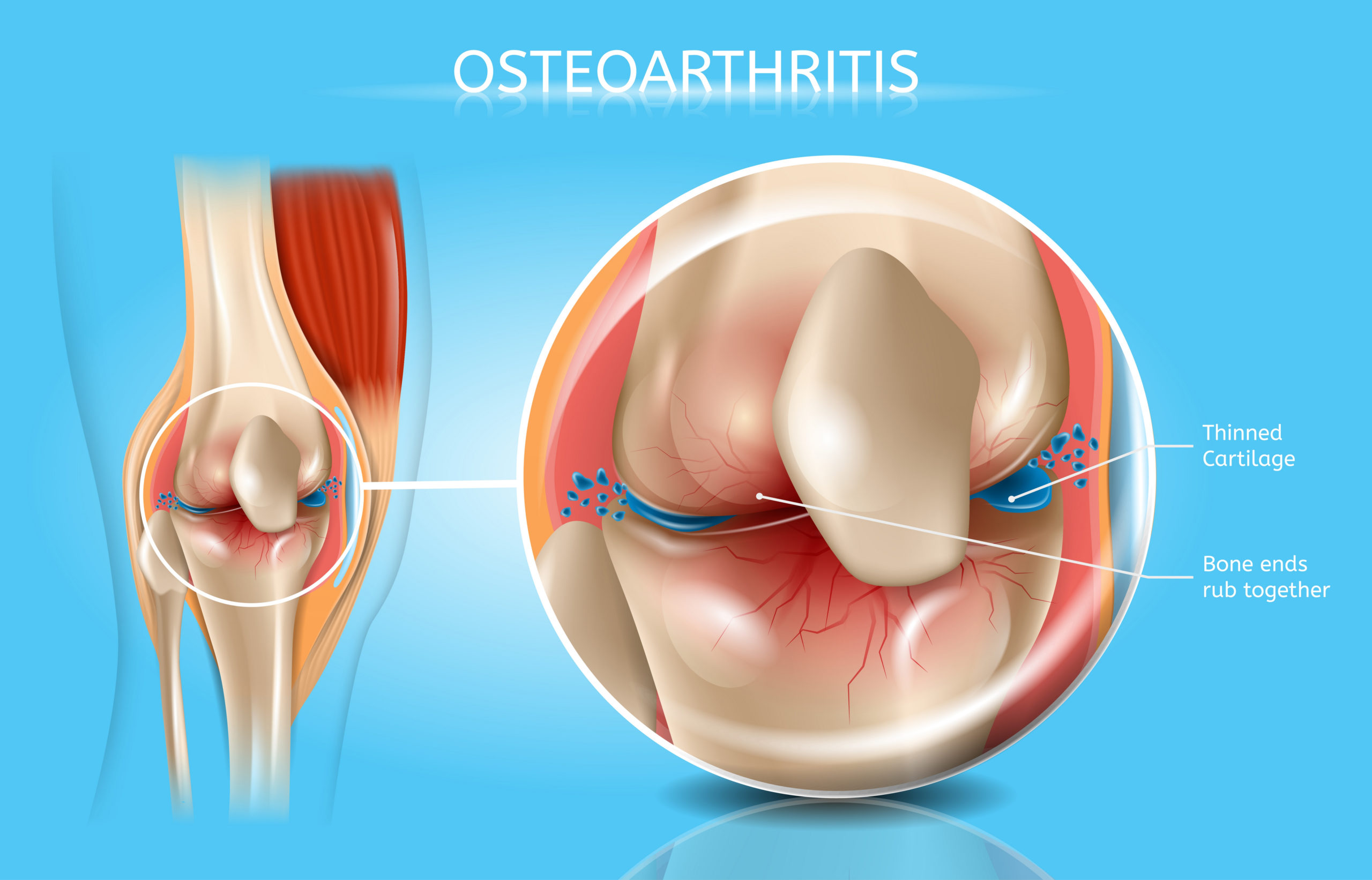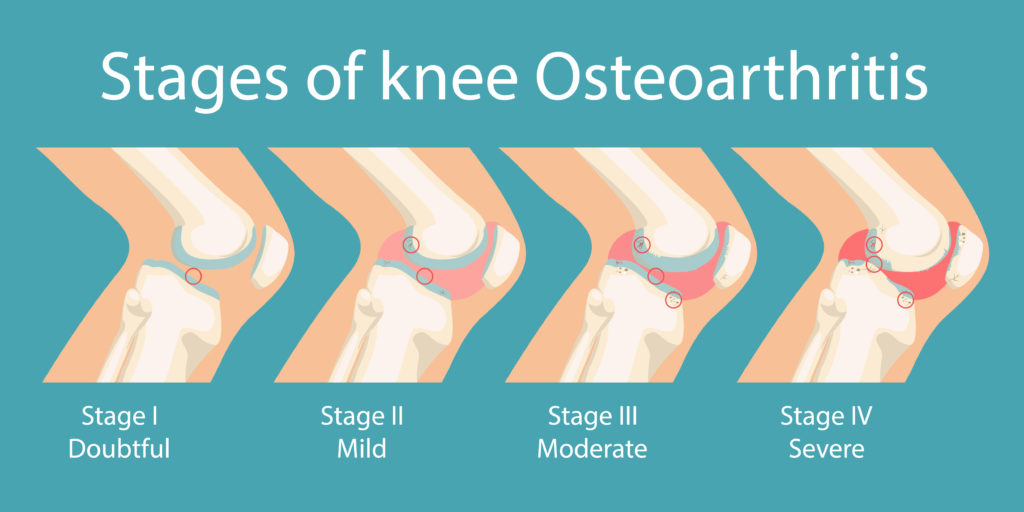

Osteoarthritis (OA) is a chronic degenerative condition of the joints that predominantly affects the knee joints, spine and hip joints, and the joints present in your hands. Your bones have a cushion of protective cartilage surrounding them. Due to age and other factors, this protective layer wears off, which is called Osteoarthritis.
Osteoarthritis of the knee impacts the functionality of the knee joints. It further leads to pain and discomfort in the knee area. This health condition can also cause disability with its progression.
A study by the CDC (Centers for Disease Control and Prevention) shows that OA of the knee affects millions of people worldwide. The figures are gradually increasing with 1 out of 2 people having the likelihood of developing OA in their lifetime.
OA of the knee can significantly affect your health, productivity at work, and finances.

There are different OA stages of the knee, starting from 0 to 4, depending on the severity of the condition.
Stage 0 (Normal). It denotes that your knees do not show any signs and symptoms of OA. It is a normal knee condition, and you do not need any treatment for the same.
Stage 1 (Minor). In this stage, you are most likely to develop minor bone issues, bone spurs, and wear and tear towards the end of the knee joint. However, this stage is not much of a concern, and you might not experience any pain or discomfort. Although you are less likely to need any specialized treatment, your doctor may recommend making some lifestyle changes and taking supplements like chondroitin and glucosamine.
Stage 2 (Mild). In this stage, you are most likely to develop more bone spurs leading to mild joint pain. In most cases, people with Stage 2 OA experience stiffness around the knee joints, especially when sitting for a long time, after a workout session, or getting up in the morning. When a doctor gets to diagnose your condition at this stage, it becomes easy for them to manage the disease well and stop the progression.
Stage 3 (Moderate). In this stage, the cartilage surface tends to erode, causing narrowing the gaps between the bones and more bone spurs. As the disease progresses, the joints happen to swell, leading to pain and discomfort while moving, running, walking, and kneeling, among others. Moreover, you might experience a popping noise while walking, besides joint stiffness. Your doctor is likely to prescribe pain-relief treatments and OTC (over-the-counter) NSAIDs to counter the pain. In case these do not work, he or she might recommend taking opioid pain-relief medications.
Stage 4 (Severe). In this stage, the level of damage to your knee joints is high, causing more friction, joint stiffness, and pain. As Stage 4 is the advanced stage of the disease, it is most likely to make even the day-to-day activities difficult. Although other treatments may provide some relief, your doctor is more likely to recommend surgical treatment.
The signs and symptoms of osteoarthritis usually develop gradually and worsen with time. It includes the following:
If you experience any of the symptoms mentioned above, you should consult your doctor, preferably an orthopaedician . Avoiding the symptoms might aggravate the condition. In the worst-case scenario, it can also lead to permanent disability.
Call 1860-500-1066 to book an appointment
One of the leading causes of osteoarthritis is the deterioration of the cartilage that cushions your bone ends. So, what is cartilage? It is a firm yet lubricating tissue that helps in the frictionless movement of joints. When this tissue breaks down, your bones tend to rub on to one another. Therefore, osteoarthritis is also known as wear and tear ailment.
However, apart from wearing off the cartilage, this health condition impacts your joints as a whole. Many factors increase your risk of developing osteoarthritis. It includes the following:
Although osteoarthritis is an irreversible health condition, treatments can help you manage the pain and other symptoms well. The treatment options include the following:
In case medications and therapies do not help, your doctor may recommend the following treatment options:
Strengthening your muscles and maintaining a healthy weight have shown to be effective at preventing the progression of osteoarthritis.
As osteoarthritis is a progressive disease, there is no permanent cure for it. However, with the right treatment and lifestyle changes, you can manage it to a great extent and lead a normal life.
Our dedicated team of Orthopedicians who are engaged in treating simple to complex bone and joint conditions verify and provide medical review for all clinical content so that the information you receive is current, accurate and trustworthy
